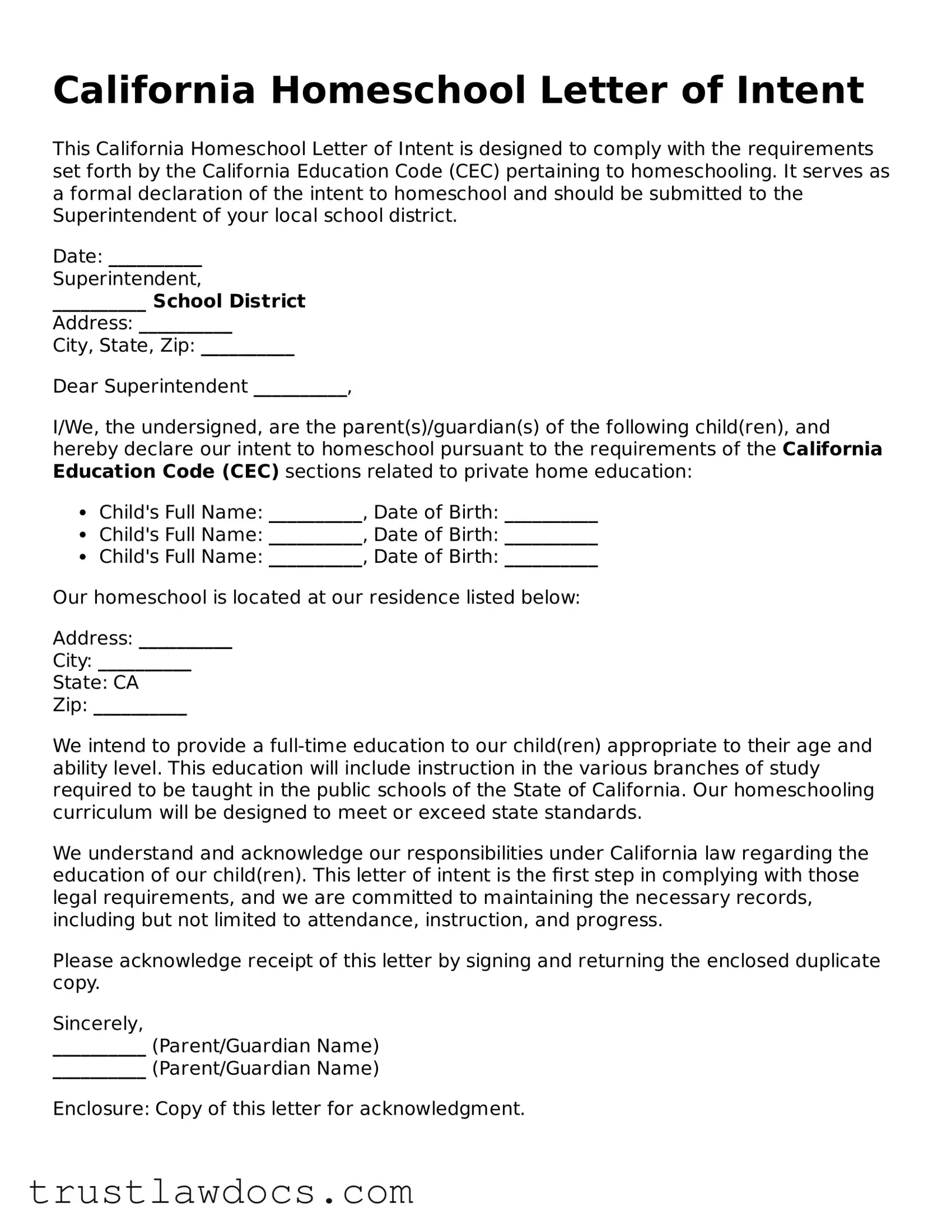California Homeschool Letter of Intent
This California Homeschool Letter of Intent is designed to comply with the requirements set forth by the California Education Code (CEC) pertaining to homeschooling. It serves as a formal declaration of the intent to homeschool and should be submitted to the Superintendent of your local school district.
Date: __________
Superintendent,
__________ School District
Address: __________
City, State, Zip: __________
Dear Superintendent __________,
I/We, the undersigned, are the parent(s)/guardian(s) of the following child(ren), and hereby declare our intent to homeschool pursuant to the requirements of the California Education Code (CEC) sections related to private home education:
- Child's Full Name: __________, Date of Birth: __________
- Child's Full Name: __________, Date of Birth: __________
- Child's Full Name: __________, Date of Birth: __________
Our homeschool is located at our residence listed below:
Address: __________
City: __________
State: CA
Zip: __________
We intend to provide a full-time education to our child(ren) appropriate to their age and ability level. This education will include instruction in the various branches of study required to be taught in the public schools of the State of California. Our homeschooling curriculum will be designed to meet or exceed state standards.
We understand and acknowledge our responsibilities under California law regarding the education of our child(ren). This letter of intent is the first step in complying with those legal requirements, and we are committed to maintaining the necessary records, including but not limited to attendance, instruction, and progress.
Please acknowledge receipt of this letter by signing and returning the enclosed duplicate copy.
Sincerely,
__________ (Parent/Guardian Name)
__________ (Parent/Guardian Name)
Enclosure: Copy of this letter for acknowledgment.
